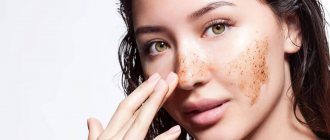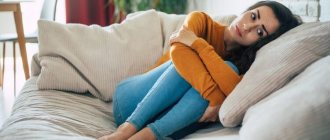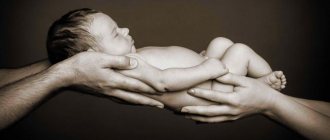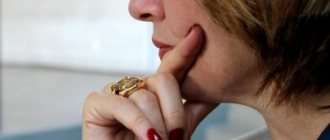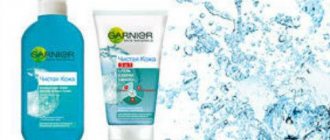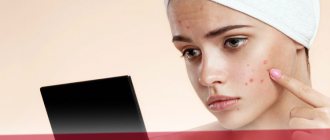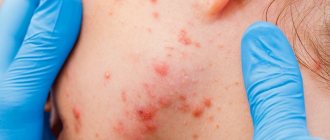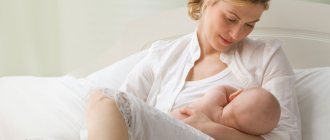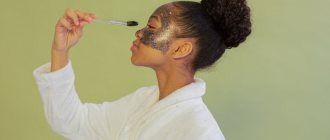Acne in children is one of the most common skin diseases, especially in adolescence. We are talking about a violation of the hair follicles and sebaceous glands, which become clogged, leading to the formation of pimples and cysts.
Acne or Acne vulgaris by its medical name is defined as inflammation of the sebaceous glands. Most often this occurs during puberty, as a result of hormonal activity. In addition to pain and discomfort, acne in boys and girls is fraught with social isolation, the constant need to hide damage, low self-esteem, and in some cases even the development of anxiety and depression. That's why it's so important to understand what acne is and what the most effective ways to treat it are.
Causes of acne in children and adolescents
Pimples occur when pores become clogged. What type of acne occurs depends on what is clogging the pores. Although scientists are still trying to figure out why some people's skin is more prone to developing acne, it's likely that hormones play a role. This explains why acne is so common among teenagers.
During puberty, hormones called androgens increase the size of the skin's oil glands. These glands begin to produce more sebum, which can clog your pores.
But acne can start before (or after) adolescence. About 20% of newborns suffer from neonatal acne, which usually appears between the second and fourth weeks of life. This type of acne goes away on its own without leaving any scars. It also does not increase the risk of developing severe acne later in life.
Some children develop infantile acne, which appears between 3 and 6 months of age. Baby acne can cause deep nodules and cysts, leading to permanent acne scarring. Fortunately, childhood acne is rare. Source: Modern concept of the etiopathogenesis of acne vulgaris. Isaeva M.S., Burieva Z.T. Avicenna Bulletin, 2010. p. 127-132 Pathogenetic approaches to the treatment of acne vulgaris. Khaldin A.A., Mareeva E.B., Skvortsova A.I. Russian Journal of Skin and Venereal Diseases, 2012. p. 34-37.
Treatment of atheroma in children
The optimal method of treating atheroma in children is its surgical removal.
However, the age of the patient decides a lot here. Thus, most pediatric surgeons, in the absence of severe clinical symptoms, recommend a wait-and-see approach. Sometimes the swelling may resolve on its own. This is especially true for newborns and infants. In such cases, the development of the neoplasm is observed until the age of three, and if it persists, only then is it removed. Surgical intervention can be carried out traditionally using a scalpel or minimally invasively using a laser. In the first case, the surgeon excises the tumor with a capsule, which eliminates the risk of relapse. After this, cosmetic stitches are applied to the tissue to achieve the best aesthetic result.
Laser removal in children is used for small tumors. Using this technique, it is possible to avoid incisions and the formation of postoperative scars. In both cases, a comprehensive examination of the child is first carried out with the selection of the optimal treatment option.
In the postoperative period, the child may be prescribed the following groups of medications:
- painkillers;
- anti-inflammatory;
- antibacterial.
Drug therapy is aimed at eliminating discomfort and preventing infection of the postoperative wound.
What causes acne and what causes it
While stress may not cause acne, it can make existing acne worse. Research shows that when stress increases, the severity of acne increases. Acne may get worse if teens:
- sleep too little;
- eat certain foods traditional to the Western diet;
- use oily cosmetics and skin care products.
Almost everyone experiences at least a few breakouts during their teenage years. It is impossible to predict who will develop more severe acne, but there is an increased risk if one or both parents (or other close blood relatives) have had severe acne that results in scarring.
Types of acne, formation mechanism and what they look like
Teenage acne on the face of adolescents can be of several types (or a combination of them). Source: Pathogenetic rationale for local acne therapy in adolescence. Mazitova L.P., Aslamazyan L.K., Kvachakhiya L.L., Namazova L.S. Pediatric pharmacology, 2008. pp. 94-97):
- whiteheads;
- black dots;
- acne;
- nodules, cysts, or both (deep and painful).
- Whiteheads . Removing whiteheads can lead to more whiteheads and acne scars, which is why dermatologists recommend treating whiteheads with an acne treatment rather than picking at them. Whiteheads form when excess oil and dead skin cells clog the pores. This causes white or flesh-colored pimples to appear. Medical name: closed comedon, which means “closed pore.”
- Black dots . Dermatologists recommend treating this type of acne with a retinoid, since squeezing the blackheads can cause infection or permanent scarring. This type of acne also develops when excess sebum and dead skin cells accumulate inside the pore. As the secretion accumulates, it expands the pores and you see blackheads. Many people mistakenly believe that a black spot is dirt. What you are actually seeing is a chemical reaction. When deposits inside the pore react with oxygen in the air, a black color appears. Medical name: open comedo, which means “open pore.”
- Sometimes excess oil, dead skin cells and bacteria get trapped in the pores. Bacteria, which are usually found on our skin, can multiply quickly in excess oil. As the pores become filled with bacteria, inflammation (swelling) develops and a pimple appears. Medical name: If a pimple contains pus, it is called a pustule . A pimple without pus is called a papule .
- Nodule or cyst . When the pores become filled with excess oil, dead skin cells and bacteria, causing inflammation (swelling) that penetrates deep into the skin, a lump or cyst forms. Because these rashes penetrate deep into the skin, they can be painful. The main difference between a nodule and a cyst is that the cyst contains pus. Because nodules do not contain pus, they feel firmer to the touch than cysts.
Symptoms of molluscum contagiosum
The incubation period of the disease ranges from two weeks to several months, but most often the rash appears on the 14-15th day.
At first, single rashes appear, then there are more of them. Molluscum contagiosum can affect any area of the skin except the palms and soles. In children, exposed areas of the arms and legs, as well as the face and neck are most often affected. In adults, the genital area and the inner thighs are most often affected.
In the typical form of the disease, the rashes are located only in one anatomical area; in the generalized form, they spread throughout the body.
Rash
The elements of the rash look like protrusions (papules), firm and painless to the touch, pink or flesh-colored, with a pearlescent top. In the center of the papule there is a small depression, from which, when pressed, a white pasty mass is squeezed out. Papules have a round or oval shape, the size usually varies in the range of 2-5 mm, but sometimes the nodules merge, and then such formations can reach a diameter of 1 cm or more.
More about the symptom
Itching
In some cases, the rash is accompanied by itching, which intensifies when scratching. Under no circumstances should papules be scratched, as this can lead to a bacterial infection. The presence of a bacterial infection is indicated by redness of the skin around the papules, swelling, and suppuration.
More about the symptom
Consequences of acne
Acne can cause more than just rashes. Some people believe that acne is a skin condition that eventually outgrows, but it can have a profound and lasting impact on one's life. Many people experience one or more of the following after acne appears.
Acne scars: When the breakout goes away, it leaves behind a permanent scar. Some scars cause indentations in the skin. The rest are gradually disappearing. It's impossible to predict who will develop scars after their acne goes away, but the following factors increase your risk:
- acne has been present for a long time because the teenager does not treat it or the treatment does not work;
- One or more close blood relatives have had acne in the family.
Dark spots on the skin: As acne breakouts fade, some people see the area where acne once was. This completely flat spot can be pink, red, purple, black or brown, and is often mistaken for a permanent acne scar. Source: Modern Treatments and Rehabilitation of Acne Vulgaris. Barinova A.N. Russian family doctor, 2022. p. 5-18.
When peeling should not be done
Indeed, there are clinical skin conditions when chemical peeling is contraindicated and can provoke an exacerbation of the process and the appearance of new inflammatory elements, or penetrate into the deeper layers and cause a chemical burn.
Contraindications include:
- High activity of the process of rash appearance
Peeling is a stimulating procedure and its implementation can provoke the appearance of new elements on the skin.
- Acne 3 – 4 degrees of severity (cysts, drainage elements, conglobate acne)
Rashes affecting the middle and deep layers of the skin, plus, as a rule, a violation of the skin barrier function are contraindications for chemical peeling.
- The presence of violations of the integrity of the skin (for example, after mechanical cleaning or self-squeezing)
Acids will easily penetrate into the deep layers of the skin, causing a chemical burn, accompanied by a burning sensation during the procedure and subsequent peeling of the skin.
In all other cases, chemical peeling is indicated as a therapeutic measure.
However, there is no universal solution for everyone. It is necessary to select the composition individually, depending on the clinical manifestations.
Diagnostics
If your teen has acne, a dermatologist can diagnose acne by looking at the breakouts. During your appointment, your dermatologist will also note what types of acne they are and where the breakouts appear on the skin. This will help your dermatologist create an effective treatment plan. Sometimes what looks like pimples is another problem. For example, some people mistake hidradenitis suppurativa, also called acneinversa, for everyday acne. Treatment for this condition is different from that for acne. Another disease that can be mistaken for acne is perioral dermatitis. This often causes rashes that look like pimples around the mouth. Whether your teen has stubborn acne or another condition, a dermatologist can accurately diagnose acne vulgaris and create a treatment plan tailored to your teen's needs.
Types of cosmetics for blackheads
Now let’s take a closer look at what cosmetic products help against blackheads – and how to incorporate them into your care.
Creams
A special cream for acne and blackheads can be drying, so it is permissible to alternate it with other moisturizing products: for example, in the morning - neutral care, and in the evening - cream with salicylic acid.
Scrubs
The general consensus is that products with scrubbing particles should be used most often - every other day, and ideally twice a week after an acid peel (tonic) or instead of a regular cleansing gel.
Tonics
Lotions and tonics are indispensable in the fight for a beautiful face: they gently exfoliate, mattify and enhance the effect of the care applied after them. Focus on the behavior of your skin - sometimes it is enough to wipe it with toner only in the morning.
Oils
Even oily skin needs ceramides, just in smaller quantities. Look for non-comedogenic oils and apply oil-based products twice a week only to moisturized skin.
Gels
If the gel cleanser for blackheads contains acids, that’s just great! But alcohol at the very beginning of the list of ingredients is undesirable, because the mission of the gel is to cleanse the skin of a mix of sebum and typical urban pollution without overdrying. You can wash your face with this product twice a day with a clear conscience.
Plasters
Not all cosmetologists approve of them. But what could be more effective than a strip that pulls out dozens of “columns” from pores at a time? And if you apply a steaming mask first... Be sure to consult your dermatologist before declaring war on blackheads with such a radical method, especially if you have sensitive skin.
Masks
Aimed at drawing out impurities from pores and reducing skin oiliness. Typically, the mask is applied once a week or more often after washing and only on dry skin, left for at least three minutes, and then washed off. Cleansing fabric masks are also useful as an express remedy.
Treatment of facial acne in teenagers
The appropriate acne treatment plan depends on many factors, including:
- type of acne;
- where acne appears on the skin;
- what treatments have already been tried;
- when the rash started;
- age;
- whether acne left dark spots or scars Source: Modern methods of treating acne in children. Nosacheva O.A., Torshkhoeva R.M., Namazova-Baranova L.S. Pediatric pharmacology, 2013. p. 23-30.
Your treatment plan may vary. But there are a number of drugs that are included in clinical guidelines for the treatment of acne. Effective treatment for facial acne in a teen may include retinoid medications, benzoyl peroxide, azelaic acid, or salicylic acid. An antibiotic may be prescribed and applied to the skin.
Nodules and cysts are more difficult to treat. Treatment may consist of prescription medications applied to the skin, antibiotics, and isotretinoin (a medication approved for the treatment of severe acne).
Sometimes additional laser or light therapy is needed: Research shows that laser and light devices can help clear up acne. This type of treatment works best in combination with other acne treatments.
Healthy Diet: Some studies show that eating a healthy diet can also help give you clearer skin.
Skin care is so important that without it you won't get the results you want. Even if you use an acne treatment correctly, if teens are too rough on their skin, new breakouts may appearSource: Combination Acne Therapy. Mamarasulov D.I., Yuldashev M.A., Moon A.V., Ismoilov B.B. Medicine: theory and practice, 2019. p. 342-343.
Getting rid of blackheads for teenagers using natural remedies
You can rid a teenager of blackheads at home. To do this, we recommend using natural substances. Specifically egg whites. Alternatively, you can use lemon juice.
How to make a mask from egg whites?
Egg white is very healthy. With it, you can easily tighten the pores of a teenager. And also get rid of blackheads in the shortest possible time.
To do this, you just need to take an egg. Separate the protein from it. After which you need to perform a facial massage.
And then put the protein on it. We recommend using fabric for this. Also, as an alternative, you can put the white on your face with your own hands. It is important that they are clean.
When you apply the mask, let it sit on your face for a while. And dry completely. After this, we recommend applying a 2nd layer of the same mask to your face.
During the procedure, you will need to apply several layers to your face. At least four or five. Wait a bit before applying each subsequent layer. Until the previous one becomes completely dry.
Lemon juice
Thanks to this substance, you can tighten your child’s pores in a short time. The product should be used according to the following principle. It is recommended to apply lemon juice on those parts of the face that are covered with blackheads. The result will not take long to arrive. Black dots will gradually begin to disappear from the child’s face.
You can use an alternative application option. Take a swab made of cotton wool. Then dip it in lemon water. And start using it to blot those parts of the teenager’s body that are covered with blackheads.
It is recommended to carry out the procedure regularly. Every day before the teenager goes to bed. In the morning, let him use any moisturizing cleanser.
Warm honey
Honey is also an effective way to combat blackheads. It acts as an antiseptic. It also rids the skin of bacteria. Thanks to this, it helps a teenager get rid of acne. And also blackheads.
To prepare the drug, you need to do a number of steps. You will need a frying pan. It is recommended to add honey to it. After which it will need to be heated a little.
You need to wait until the honey becomes warm. It is important that it is not hot. Otherwise, the product will not be able to be used.
When the honey reaches the desired temperature, place it on the part of your teenager's skin that is covered in acne. And also black dots. After application you will need to wait a little. For ten minutes. During this time, the substance will manifest itself in action.
Use a special solution consisting of boric acid
The substance must be mixed with water. And dissolve it in it. To make the solution, use the following recommendations.
Buy boric acid. It is sold in almost every major pharmacy. Take a small saucepan. Pour hot water into it. In the amount of one and a half glasses. It should be warm.
After this, add boric acid to the solution. You will need it in the amount of one spoon. The last one should be the dining room.
When the solution is ready, you need to take a cloth. It must be new and sterile. The fabric needs to be blotted in the resulting solution. After which you need to blot the teenager’s face. Those parts of it that are covered with acne. And also blackheads.
After applying the substance to the teenager’s skin, you will need to wait a little. Literally ten to twenty minutes. Some time after this, the substance will begin to act.
Iodine and Epsom salts
These remedies are also quite effective. They allow you to get rid of sebum accumulated under the skin. They also help remove dead parts.
The substances should be used as follows:
- Take Epsom salt. In the amount of one spoon.
- Take iodine. To the amount of 4 drops.
- Take hot water.
Mix a solution of these substances. Do this for as long as possible. Until the salt completely becomes part of the water. And the temperature of the resulting liquid will not become normal. Not too hot.
The mixture will take quite a long time to cook. This must be done until it reaches the temperature at which the solution can be applied to the teenager’s skin. Once this happens, take action.
Take the cloth. Soak it in the substance. Then start washing those parts of your face that have blackheads. The solution must be completely dry.
Then tell the teenager to wash his face. And also dry it. To keep your skin healthy.
Use baking soda
Baking soda is another way to achieve what you want. To use it, use the following recipe:
- Take baking soda. In the amount of one teaspoon.
- Take water.
- Mix baking soda and water. It is very important that the liquid is homogeneous.
When preparing the mixture, use the volume of a traditional cup as a guide. If liquid fits in it, then it's good. The mixture has been prepared in sufficient volume. Once the product is ready, you can proceed to action. To interact with the skin.
To do this, you need to place the ointment on the teenager's skin. Then start applying it. Using special moves. As if massaging a teenager's face.
After the mixture is applied, the skin must be thoroughly treated. To do this, just rinse off the liquid. It is recommended to do this using plain water. Taken from the tap. Also, after using the product, we recommend that the teenager use additional cleansers. Those that have moisturizing properties. They need to be applied to those parts of the skin that have been exposed to external influences.
Buy your teenager a product that contains salicylic acid.
It is possible that a teenager's skin is sensitive. Or she is very susceptible to irritation. In this case, give preference to specialized products. Those of them that contain salicylic acid.
It is very easy to identify such means. Just pay attention to their packaging. On such products it is often written that they contain the corresponding acid.
If a teenager has normal skin, then give preference to standard products
Those of them that contain so-called benzoyl peroxide. Products of this type have a positive effect on the skin. They soften a teenager's sebum. The one that clogs his pores. After which the product uncorks them.
Solutions of this type are quite effective. Because they act very quickly. However, they must be used carefully. Because they can negatively affect the skin.
Tell your teenager to apply face cream
Ideally, a teenager should regularly use face wash. Also, he needs to use a special face cream. Its structure should contain salicylic acid.
A cream of this type will have a positive effect on a teenager. At the same time, its use must be treated with caution. Adhering to all recommendations on the packaging. Otherwise, the cream may negatively affect the teenager's skin. It is recommended to keep this substance on your face for a maximum of ten minutes. After which it needs to be washed off. So as not to harm the skin.
Prevention
Do not wash your face with soap or use rough scrubs too often. Acne is not caused by dirt. Two gentle washes a day are enough. Exfoliating your skin too often can cause irritation and dryness of the skin, which causes the glands to produce more oil, which increases the likelihood of acne.
Use non-comedogenic products (those that do not clog pores) on your face.
Do not press on the spots, as this can drive bacteria deeper into the skin. This can lead to more inflammation and permanent scarring.
Sources:
- Modern concept of etiopathogenesis of acne vulgaris. Isaeva M.S., Burieva Z.T. Avicenna Bulletin, 2010. p. 127-132
- Pathogenetic approaches to the treatment of acne vulgaris. Khaldin A.A., Mareeva E.B., Skvortsova A.I. Russian Journal of Skin and Venereal Diseases, 2012. p. 34-37
- Modern methods of treatment and rehabilitation of patients with acne vulgaris. Barinova A.N. Russian family doctor, 2022. p. 5-18
- Pathogenetic rationale for local therapy for acne in adolescence. Mazitova L.P., Aslamazyan L.K., Kvachakhiya L.L., Namazova L.S. Pediatric pharmacology, 2008. p. 94-97
- Modern methods of treating acne in children. Nosacheva O.A., Torshkhoeva R.M., Namazova-Baranova L.S. Pediatric pharmacology, 2013. p. 23-30
- Combination therapy for acne. Mamarasulov D.I., Yuldashev M.A., Moon A.V., Ismoilov B.B. Medicine: theory and practice, 2022. p. 342-343
The information in this article is provided for reference purposes and does not replace advice from a qualified professional. Don't self-medicate! At the first signs of illness, you should consult a doctor.
Causes of blackheads on the face and preventive measures
- Insufficient cleansing of facial skin
is one of the key causes of imperfections. Twice a day, wash your face with foams or gels for oily problem skin or wipe your face with micellar water, which delicately removes remaining impurities from the skin and prevents clogging of pores. - Excessive exfoliation and squeaky cleansing
is the other side of the coin. Aggressive formulas of alkali- or alcohol-based cleansers disrupt the hydrolipidic mantle of the skin and provoke dehydration. Choose gentle formulas with a normal or acidic pH. - Insufficient hydration
disrupts the hydrobalance of cells and triggers increased sebum synthesis. Dryness also occurs as a result of over-cleaning, excess matting and exposure to negative external factors. Use corrective care with hydrofixatives at the base of the formula to maintain the water balance of cells. - Incorrect care
also negatively affects the condition of the epidermis. For example, greasy, oily textures in dry skin products clog pores and can cause breakouts. Choose non-comedogenic formulas for oily, problem and combination skin. - An unbalanced diet
is another cause of imperfections in oily problem skin. Fatty, sweet, salty, spicy foods increase the activity of the sebaceous and sweat glands. Switch to a healthy diet enriched with fiber, vitamins and minerals that will help normalize your skin from the inside out.
Prices
| Name of service (price list incomplete) | Price |
| Appointment (examination, consultation) with a dermatovenerologist, primary, therapeutic and diagnostic, outpatient | 1950 rub. |
| Consultation (interpretation) with analyzes from third parties | 2250 rub. |
| Prescription of treatment regimen (for up to 1 month) | 1800 rub. |
| Prescription of treatment regimen (for a period of 1 month) | 2700 rub. |
| Consultation with a candidate of medical sciences | 2500 rub. |
| Dermatoscopy 1 element | 700 rub. |
| Setting up functional tests | 190 rub. |
| Excision/removal of cutaneous/subcutaneous elements and formations (1 element) | 2550 rub. |
| Removal of milia of one unit using electrocoagulation | 350 rub. |
